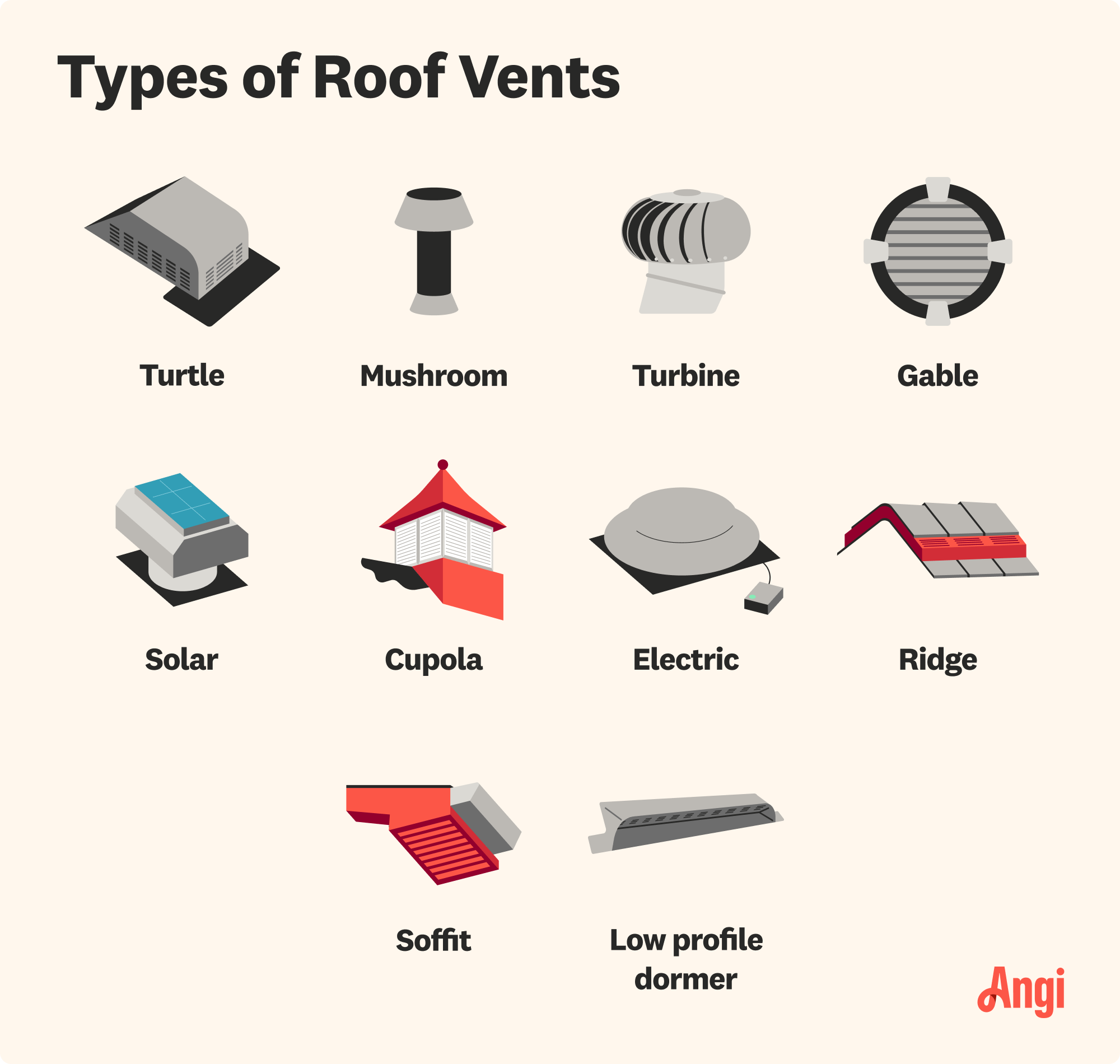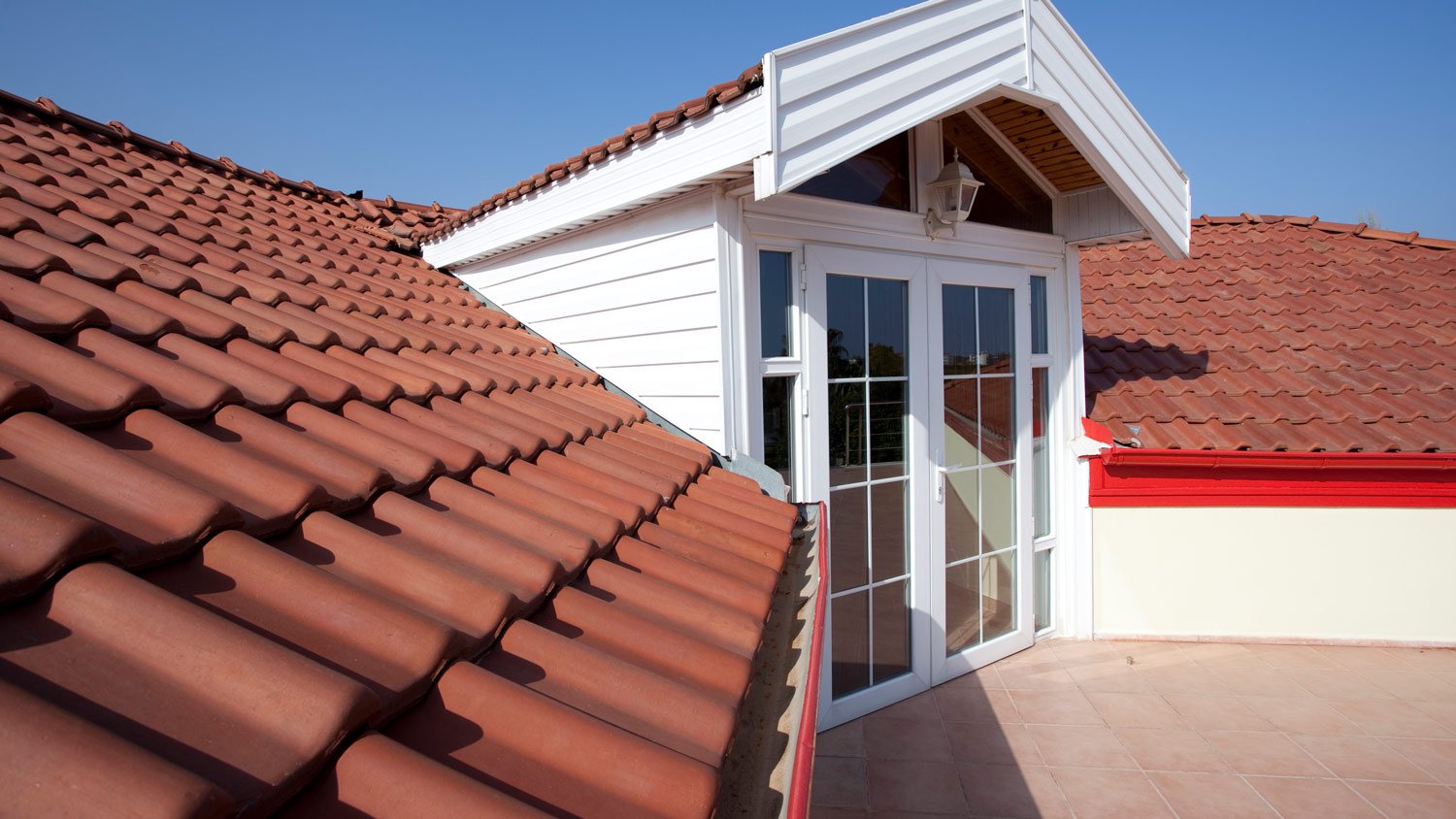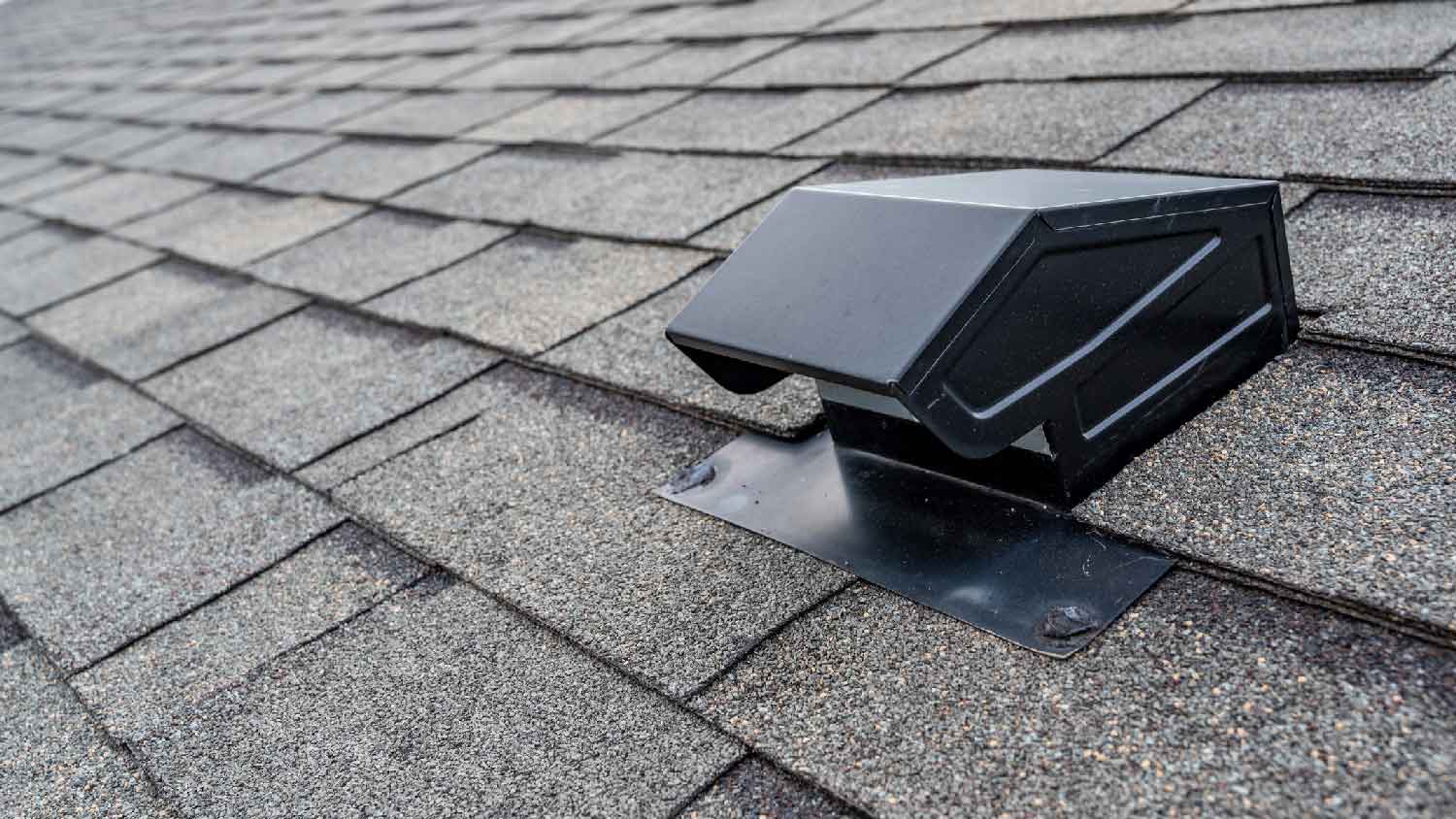
Atlanta’s hot, humid climate can cause various types of roof damage. Learn how much roof repair costs in Atlanta, GA, and what affects how much you’ll pay.
The most common myths about roof vents debunked


Roof vents improve air quality, indoor climate, and attic health.
Common myths can keep homeowners from investing in ventilation.
More isn’t better, and simply having vents isn’t enough.
Homes in all climates need roof vents year-round for airflow.
Check attic vents and make sure they are clean and unblocked.
Roof vents are one of the most overlooked areas in the house, but they impact the curb appeal and the overall life of your roof. When properly installed, roof vents can improve indoor air quality, affect the temperature and comfort level, reduce humidity, and prevent mold growth.
When you start looking for options for the best roofing ventilation for your home, you will stumble upon some common misconceptions and myths. Here are some of the myths, debunked, and the helpful facts you need to know about roof vents.
When taking on this project, expect questions only a pro can answer. With our network of local pros, you'll get the job done and your questions answered—without the hassle and stress of doing it yourself.
Yes, you need attic ventilation—but too much or the wrong combination is as bad as too little. That is because ventilation works best when calibrated to allow hot air to take the path of least resistance up and out of your attic without disruptions to the natural flow pattern.
If you install both active and passive vents, stronger and more active vents will pull air away from passive exhaust vents, preventing hot, humid air from escaping. In some scenarios, active intake vents can actually pull outside air into the attic rather than letting old air escape. Oversized systems that pull air too aggressively into the attic can actually suck temperature-controlled air from your home outside, costing you more in energy bills.
Ask your local roofer to calculate your ventilation needs in order to determine your home’s unique requirements.
Like your kitchen or bathroom, your roof needs ventilation to extend its life span and control temperatures. Proper roof ventilation helps reduce HVAC costs and prevents ice dams and moisture damage. A roof repair pro can assess your roof and make recommendations.
Just because you have them does not necessarily mean they are working right. Instead, attic ventilation needs to include the right number of intake and exhaust vents, and they need to be in the optimal locations to get the best results. Additionally, all of your vents need to be the same type—active or passive—because mixing the two types can disturb proper airflow patterns and make your ventilation situation worse. If you are not sure whether your ventilation system is set up correctly, call a local attic fan expert to evaluate your current setup.

Some homeowners may worry that the opening of roof vents allows animals into their homes. But you can rest easy knowing it is unlikely that critters will make their way into your abode through roof vents, as long as they are appropriately installed and sealed.
“One thing I hear a lot is people wondering if pests and rodents, or rain and snow, can get in through their vents,” says Ami Feller, Expert Review Board member and owner of Roofer Chicks in New Braunfels, Texas. “The short answer is ‘yes.’ All those things can come in through the vents, but it isn't usually an issue.”
Insects can enter through some vents, but they will not generally want to live in your attic unless there is a source of food and water. Rodents generally cannot enter through sealed vents that are in good condition unless they tear into your roof, because the openings are simply not large enough. The best way to deter rodent entry is to keep trees and other vegetation at least three feet away from the roof so they cannot access it.
Precipitation can and will come through the vents naturally, but it should not be enough to cause any problems, as long as your venting system is in good condition and was installed the right way, including proper weatherproofing around the vents themselves.
Contrary to popular belief, homes in all climates require vents. So, whether you are in a hot or cold climate, roof vents are helpful.
Relatedly, you may wonder, “Do roof vents work year round?” A common misconception among homeowners is that roof ventilation only comes in handy during the hot and humid summer, but ventilation is critical no matter the season.
In colder weather, it helps prevent moisture accumulation in the attic. Proper ventilation is critical; it is especially necessary if there is too much heat in the attic and snow on the roof. Ventilation prevents roof condensation from affecting the roof’s sheathing and ice dams from forming on the roof. Ice dams lead to leaks in the interior of your home.

Not all roof vents can work for any home, and not every type of ventilation works with every roofing material. The climate, the style of your roof, and the attic will determine the right vent for you.
Many roofing experts recommend ridge vents because they work with various shingles, flat tile, metal, or stone-coated steel. Roof ridge vents are also a static form of ventilation, meaning they have no mechanical parts. What does this mean for you? Fewer maintenance issues. So, is a roof ridge vent necessary? No, but they are common and popular for a reason.
Different vent types have different benefits, such as better curb appeal, less visibility, or power ventilation. Just know that you cannot use ridge vents on very steep roofs or roofs that have a lower pitch. Your roofer should check the manufacturer's installation requirements to see if they will work on your roof.
Beyond just choosing the style, the installation method is another crucial part of a proper ventilation system. A wrongly installed vent will not provide adequate ventilation and may do more harm than good, like causing leaks.
Consult with your local roofing professional for the best ventilation system for your roof that will optimize airflow. Professionals can inspect your roof and check for any weaknesses to help determine your home’s needs and fix any problems.
It is easy to think that active, powered vents that use fans to push out air are more effective than passive vents that allow air to flow out naturally; however, that is generally not true. As long as your home has adequate intake vents to bring in cooler air from outside and your venting system is correctly designed and appropriately sized for your home, that hot, humid air should move up and out of your attic without the need for powered vents or fans.
The one time this can be an exception is in very hot, humid locations that are not breezy. On hot, humid, calm days, certain homes may need more ventilation help. But if you are dealing with attic heat and moisture problems, increasing intake ventilation sources may be just as helpful as switching to an active vent system—and it can be more cost-effective. It can also delay roof replacement costs by preventing your roof from prematurely degrading or forming mold or dry rot.
So, should you remove existing attic fans and replace them with a passive system? That is not necessary, unless you have found that your active system is noisy, does not work on cloudy days (which can be a problem with some solar-powered attic fans), or is competing with passive vents already in your home. You just need to make sure your intake vents provide enough fresh air to allow your powered roof vents to do their jobs. This may include adding more intake vents or cleaning existing vents to prevent your powered roof vent from pulling temperature-controlled air from inside your home.
You need two types of vents on your roof—intake vents and exhaust vents. Intake vents are typically located lower on the roof, hidden underneath the eaves and in the soffit, where they can effectively draw in cold air. Exhaust vents, which look like small towers raised above your roof, are located higher up to help release trapped heat or moisture from the attic. Both vents work together to allow the necessary airflow through your roof. And while there are various options for each type of vent, the right combination and balance of vents are key.
When the heat rises into your attic and then escapes through the vents, it would be logical to think that vents caused it, especially when it is freezing outside, but that is not how it works.
This only happens if the roofing or the attic has old, insufficient, or damaged insulation, which may allow warm, moist air coming from your home to enter your attic. It also can happen if you have power vents that are too powerful for the square footage of your attic space. You can actually suck the heated or cooled air out of the living space through the attic door if you are over-ventilated.
A well-insulated attic will not let indoor heat leak and affect your home’s energy efficiency. The ideal attic temperature should be more or less the same as the outdoors.
Radiant barriers block heat from traveling from your roofing materials down into your attic, and they also prevent heat in your attic from making your ceilings and your whole house hotter. Vents help remove heat and moisture from your attic, but while they may lower the temperature a bit, they cannot lower the attic temperature enough to make a radiant barrier unnecessary. So, whether you have a radiant barrier between your roof and attic space, between your attic space and home ceilings, or, better still, both, those barriers will keep your attic and your home cooler.
Some people mistakenly think that seeing vent covers under their eaves or being able to see visible light through soffit vents is proof that they exist, are open, and are working the way they should. But just because you can see vents or light through them does not mean they are providing enough fresh, cool air to help ventilate your attic.
Sometimes homeowners discover that their homebuilder, roofer, or renovation contractor has blocked vents with insulation or framing; other times, there is no hole or too small of an opening behind those visible vent covers. It is even possible for you to see light but for soffit vents to be completely blocked with dust, cobwebs, leaves, construction material, or other debris. In these cases, vents cannot bring in enough new air, meaning ventilation systems cannot work properly.
The best way to prevent this is to look into your soffit vents. Can you see whether the hole inside is big enough and not obstructed? If not, use a leaf blower to blast the debris up into the attic, where you can vacuum it up. If the holes are nonexistent or too small, you will need to open up the vent and cut a hole, or hire a contractor to do that for you.
It is easy to see why this is a common myth to believe. At first glance, it makes sense that allowing air to flow up into vents and out of your roof would also remove temperature-controlled air that you are paying to heat or cool. But the exact opposite is true. Roof vents, when installed and functioning correctly, actually help your home maintain a comfortable temperature, along with keeping your indoor air quality in the healthy range and preventing your attic from being a space that harbors mold and wood rot.
If heated or cooled air is leaving your home through your attic or vents, that is an insulation or ducting problem, not a ventilation problem. In fact, your HVAC system should not be heating or cooling your attic at all, unless that space is designed to serve as living space, in which case, you will not need attic vents because your HVAC system will keep air moving and healthy.
Roof vents and integrated ventilation systems, whether active or passive, are important for the health and temperature control of any home. Now that you know the real answers to these common attic ventilation myths, you are in control of creating and maintaining an attic ventilation system that does what it should do.
From average costs to expert advice, get all the answers you need to get your job done.

Atlanta’s hot, humid climate can cause various types of roof damage. Learn how much roof repair costs in Atlanta, GA, and what affects how much you’ll pay.

Metal roofs stand up better to severe weather than asphalt shingles. See how much a metal roof costs in Atlanta to see if this upgrade is within your budget.

A new roof boosts curb appeal and home value and sets you up for decades of home protection. Learn about roof replacement costs in Atlanta to set your budget.

If you’re upgrading your roof with stone-coated steel, you should be aware of the total project cost. Learn what will impact your final stone-coated steel roofing costs.

Understanding roof rafter sizes is critical to ensure your project is structurally sound and up to code. Learn about sizes, spacing, and code requirements.

This guide lays out the cost to install a roof vent on your home depending on the type of ventilation that's best for your roof based on several factors.